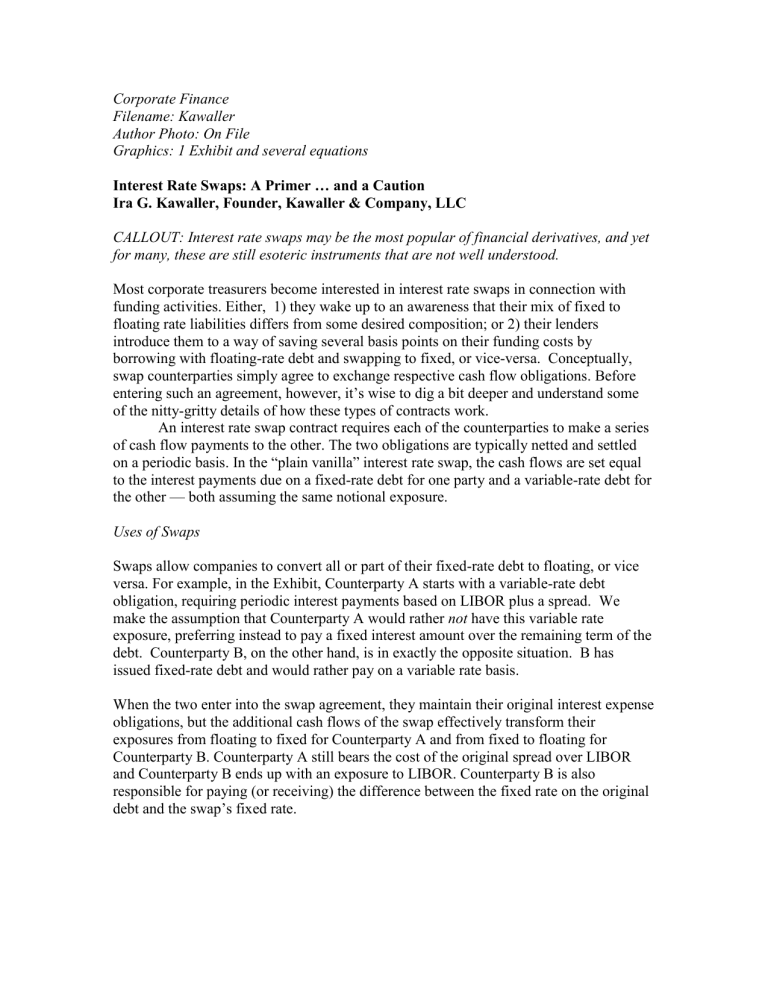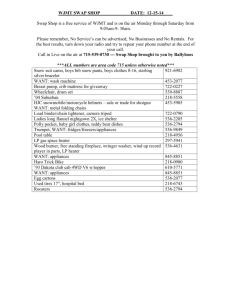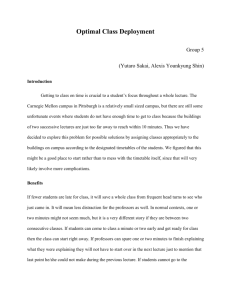Interest Rate Swaps (Primer Caution).

Corporate Finance
Filename: Kawaller
Author Photo: On File
Graphics: 1 Exhibit and several equations
Interest Rate Swaps: A Primer … and a Caution
Ira G. Kawaller, Founder, Kawaller & Company, LLC
CALLOUT: Interest rate swaps may be the most popular of financial derivatives, and yet for many, these are still esoteric instruments that are not well understood.
Most corporate treasurers become interested in interest rate swaps in connection with funding activities. Either, 1) they wake up to an awareness that their mix of fixed to floating rate liabilities differs from some desired composition; or 2) their lenders introduce them to a way of saving several basis points on their funding costs by borrowing with floating-rate debt and swapping to fixed, or vice-versa. Conceptually, swap counterparties simply agree to exchange respective cash flow obligations. Before entering such an agreement, however, it’s wise to dig a bit deeper and understand some of the nitty-gritty details of how these types of contracts work.
An interest rate swap contract requires each of the counterparties to make a series of cash flow payments to the other. The two obligations are typically netted and settled on a periodic basis. In the “plain vanilla” interest rate swap, the cash flows are set equal to the interest payments due on a fixed-rate debt for one party and a variable-rate debt for the other — both assuming the same notional exposure.
Uses of Swaps
Swaps allow companies to convert all or part of their fixed-rate debt to floating, or vice versa. For example, in the Exhibit, Counterparty A starts with a variable-rate debt obligation, requiring periodic interest payments based on LIBOR plus a spread. We make the assumption that Counterparty A would rather not have this variable rate exposure, preferring instead to pay a fixed interest amount over the remaining term of the debt. Counterparty B, on the other hand, is in exactly the opposite situation. B has issued fixed-rate debt and would rather pay on a variable rate basis.
When the two enter into the swap agreement, they maintain their original interest expense obligations, but the additional cash flows of the swap effectively transform their exposures from floating to fixed for Counterparty A and from fixed to floating for
Counterparty B. Counterparty A still bears the cost of the original spread over LIBOR and Counterparty B ends up with an exposure to LIBOR. Counterparty B is also responsible for paying (or receiving) the difference between the fixed rate on the original debt and the swap’s fixed rate.
Exhibit 1: Plain Vanilla Interest Rate Swap
Pays
LIBOR
+
Spread
A
Pays
Fixed
SW
Receives
LIBOR
Swap
Receives
Fixed
SW
B
Pays
Fixed
O
Pays
LIBOR
Pays
Fixed
SW
+ Spread
(Swap Buyer)
Pays
LIBOR + (Fixed
O
- Fixed
(Swap Seller)
SW
)
Calculating Cash Flows
Swaps are defined by a number of features, including the notional amount, the term (or tenor) of the swap, the variable interest rate and frequency of resets, and the fixed interest rate. To illustrate, consider the following swap:
Notional amount: $10 million
Term (or tenor): 5 years
Fixed rate: 4.85%, semi-annual compounding (30/360)
Variable rate: 3-month LIBOR, reset quarterly (actual/360)
The typical convention assumes a two-day settlement process. That is, the initial accrual period starts two business days following the trade date. Thus, the settlement date follows the trade date by two business days. Cash flows are then exchanged at six-month anniversaries of the starting settlement date.
For instance, assuming the swap is traded on January 10, 20XX, the starting settlement date is January 12, 20XX (assuming no intervening weekends or holidays).
The first accrual period will run from January 12 through July 12, and the subsequent accrual periods will be next nine, six-month intervals beginning on July 12 and January
12, respectively, unless those anniversary dates fall on holidays or weekends. In that case, the interval boundaries will be adjusted to the next business day – unless that adjustment would push the interval into the next calendar month. In that case, the adjustment moves the interval boundary back . For instance, if the initial spot value date were December 31, the first six-month interval would end on June 30, or earlier if the 30 th fell over a weekend.
The fixed cash flows are calculated using a 30/360-day count convention. That is, all months are assumed to have 30 days, and the full year would thus have 360 days.
Therefore, the fixed cash flow obligation for each period is calculated as follows:
Equation 1:
CF
Fixed
$ 10 million
4 .
85 %
d
30 / 360
360 the fixed cash flow obligation Where CF
Fixed d
30/360
=
= days in the six-month period, using the 30/360 convention
Ordinarily, d
30/360 will be 180 days, except in those cases where cash flows cannot be made on the “normal” six-month anniversary (i.e., the same calendar day as that of the original spot value date), because market conventions relating to weekends, holidays, and month-ends foster an acceleration or deferral of the cash flow settlement.
On the variable side, despite the semi-annual schedule for settlements (i.e., cash adjustments), interest rate re-sets are made quarterly, and the calculation for interest employs the actual/360 convention. Thus, each six-month interval (previously defined) would be covered by two three-month intervals.
The first of theses three-month sub-intervals will always have a common start date to its associated six-month intervals’ start date. And the second three-month subinterval will mature on a common maturity date as that of the associated six-month interval. The intermediate date (i.e., the end of the first three-month sub-interval and the start of the second three-month sub-interval) is found by taking the calendar day of the initial settlement, three months hence, with the same adjustments as described above if this three-month anniversary happens to fall on a weekend or holiday.
Given this determination of the start and end dates in each three-month subperiod, the variable interest rate for the entire six months, R
VAR
, can be determined only after the second three-month rate has been determined (i.e., two business days before the start of the second three-month period).
For illustrative purposes, suppose that at the onset of the swap, three-month
LIBOR was Ra and after three months (i.e., when the variable rate is re-set), three-month
LIBOR was Rb . R
VAR
is found by solving Equation 2.
Equation 2:
( 1
R
VAR d
360
)
( 1
Ra da
360
)( 1
Rb db
360
) where da and db are the actual numbers of days in the first and second quarter, respectively.
Thus, the variable cash flows of this swap would be found by plugging R
VAR
into this equation:
Equation 3:
CF
Var
$ 10 million
R
VAR
( da
db )
360
Generally, subsequent to the determination of CF
Fixed
and CF
Var
, the two would be netted, and this resulting amount would be paid by the party with the larger obligation, and received by the party with the smaller obligation.
Prices of Swaps
At any point in time, the price of a swap should be equal to the present value of the stream of cash flows expected to be paid and/or received over the life of the swap. As these prospective cash flows are uncertain, the estimates for these forthcoming cash flows are based on an assumed set of forward interest rates for the variable interest rates.
Discerning these forward rates, however, is a challenge. Different analysts may judge forward interest rates to have different values, and thus each may ascribe different values to the same swap. These differences tend to be quite small for plain vanilla swaps, however. Moreover, irrespective of a swap’s theoretical value -- even allowing for some variance in the relevant underlying forward rates -- dealers may elect to make markets for swaps at prices other than these respective fair values. And for this reason, it’s recommended that those seeking to engage in swaps transactions should not limit their attention to the quotes of a single dealer.
The price of the swap might alternatively be viewed as the difference between the present value of the stream of fixed cash flows and the present value of the stream of variable cash flows. This difference, in turn, is identical to the difference between the price of a fixed rate bond and the price of a variable rate bond – both having a par value equal to the notional amount of the swap.
This perspective allows us to think of the swap as a pair of back-to-back loans (or bonds). That is, the same cash flows occur when (a) A and B enter a fixed versus floating swap where A pays fixed and B pays floating, or (b) A actually borrows on a fixed-rate basis from B for the notional amount, and B borrows on a variable rate basis from A.
Accounting Considerations
Users of interest rate swaps should appreciate that the economic intentions of synthesizing fixed-rate debt (by issuing floating and swapping to fixed) or floating-rate debt (by issuing fixed and swapping to floating), will only be reflected in financial statements if special hedge accounting is applied. To qualify for special hedge accounting, the intended hedge must qualify for this treatment, and the hedging relationship must be documented at the inception of the hedge (i.e., at or before the trade date for the swap).
The governing accounting standard, FAS 133, requires differential treatment depending on whether the “hedged item” is designated as forthcoming variable interest exposures or a recognized fixed rate asset or liability. In the former case, assuming the documentation is in order, cash flow hedge accounting would be applied. In the ideal case, this treatment defers all gains or losses on the swap other than the cash flows or accruals that pertain to the current period.
In contrast, with fair value hedge accounting, all of the gains or losses of the swap
(i.e., changes in the present value of the swap over the period, as well as any realized cash flows during the accounting period) are included in current income – but so too are
the changes in the value of the fixed-rate debt, due to the risk being hedged, along with its cash flows and accruals.
Final Considerations
Critically, not all hedgers will end up with income statements that are fully consistent with the economic intent their hedges. Clearly, this result would be intended, but it may not always be realized. The desired result could be assured, however, if hedgers take pains to tailor the swaps that they transact to match the terms of the associated debt being hedged. Under such cases, all of the critical terms, such as notional amounts, maturities, timing of accrual periods, etc., would have to correspond. In this case, the company would qualify for the “shortcut” treatment, which, in turn, eliminates the prospect that any unintended income effects will being realized. When both the underlying funding activities and the associated swaps are plain vanilla, qualifying for the shortcut treatment typically presents little or no difficulty. It’s essentially a documentation exercise. But when non-standard or otherwise exotic features are included in funding practices, some greater attention to the design of the swap contract may be required.
If this attention to detail isn’t applied and the terms of the swap do not explicitly match those of the hedged item, at least some “ineffectiveness” of hedge performance would have to be expected; and this ineffectiveness would be revealed transparently in terms of unintended gains or losses in the income statement. Put another way, even if hedge accounting is permitted, without shortcut treatment, hedge ineffectiveness could foster realized earnings that might be substantially different from the intended outcomes.
The magnitude of this potential outcome is one that is best assessed before the swap contract is on the books, when alternative funding (and hedging) mechanisms might be considered.
By far, the biggest danger for any hedging entity is that the transacted swap in question simply fails to qualify for special hedge accounting, altogether – forget about the shortcut treatment; and any time the terms of the swap don’t precisely match those of the associated debt, this possibility is present. Without hedge accounting, all of the swap’s gains or losses would be realized in earnings, with no corresponding offset from the hedged item.
These income effects can be significant -- potentially misleading analysts, investors, and financial counterparties as to the health and viability of your company.
Such a misimpression may largely be avoided, however, by involving the accounting function in the risk management process early on. Doing so puts the company in a much better position assure that income statements will appropriately reflect the economics of hedging transactions and that the company will be in a position to be evaluated on a reasonable basis.
Ira Kawaller is the founder of Kawaller & Company, LLC – a Brooklyn-based consulting firm that specializes in assisting commercial enterprises in their use of derivative instruments. Kawaller is also a member of the Financial Accounting Standard Board’s
Derivative Implementation Group (DIG). kawaller@kawaller.com.






